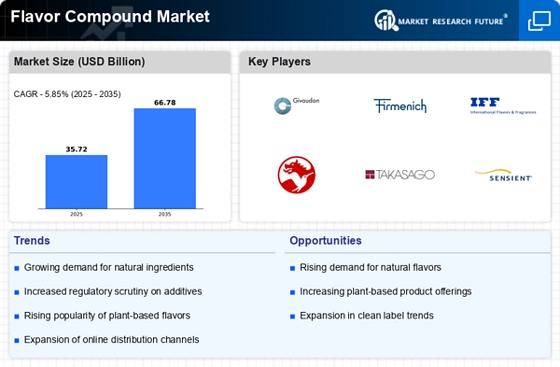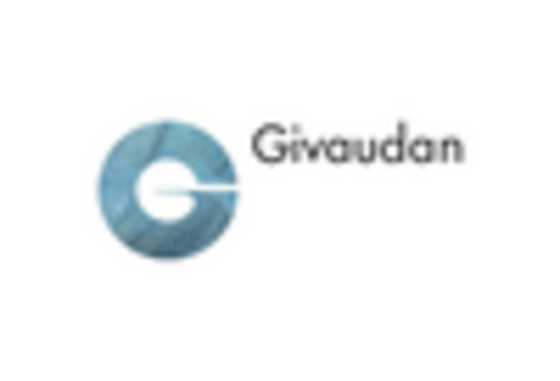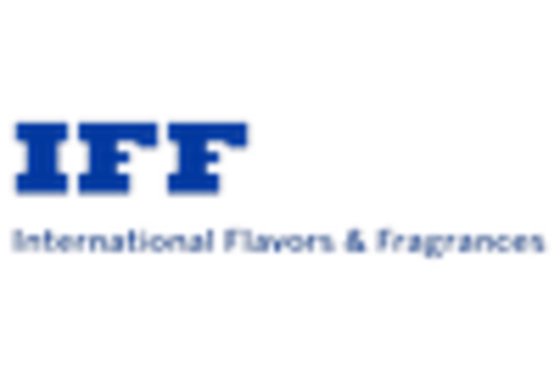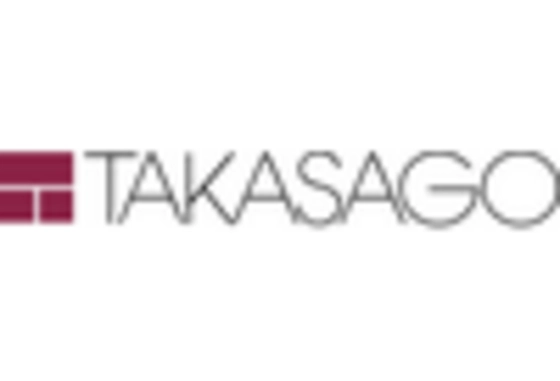Health and Wellness Trends
The Flavor Compound Market is significantly influenced by the increasing consumer focus on health and wellness. As individuals become more health-conscious, there is a growing demand for flavor compounds that can enhance the taste of low-calorie, low-sugar, and functional foods. This shift is prompting manufacturers to innovate and develop flavor solutions that align with health trends, such as natural and organic flavorings. The market for health-oriented food products is expected to expand, with projections indicating a growth rate of around 5% annually. This trend suggests that the Flavor Compound Market must adapt to the evolving preferences of health-conscious consumers, thereby creating opportunities for growth and innovation.
Expansion of the Beverage Sector
The Flavor Compound Market is poised for growth due to the expansion of the beverage sector, which includes non-alcoholic drinks, energy drinks, and functional beverages. As consumers seek diverse and unique flavor experiences, beverage manufacturers are increasingly incorporating innovative flavor compounds to differentiate their products. The beverage industry is anticipated to grow at a rate of approximately 6% per year, driven by trends such as premiumization and the demand for exotic flavors. This expansion presents a significant opportunity for the Flavor Compound Market, as companies strive to create distinctive flavor profiles that cater to evolving consumer tastes and preferences.
Increasing Demand for Processed Foods
The Flavor Compound Market experiences a notable surge in demand for processed foods, driven by changing consumer lifestyles and preferences. As urbanization continues to rise, consumers increasingly seek convenient meal options that do not compromise on taste. This trend is reflected in the growing sales of ready-to-eat meals and snacks, which often rely on flavor compounds to enhance their appeal. According to industry reports, the processed food sector is projected to grow at a compound annual growth rate of approximately 4.5% over the next few years. Consequently, the Flavor Compound Market is likely to benefit from this trend, as manufacturers strive to meet consumer expectations for flavor and quality in their products.
Regulatory Support for Flavor Innovation
The Flavor Compound Market benefits from regulatory frameworks that support innovation and safety in flavor development. Governments are increasingly recognizing the importance of flavor compounds in food and beverage products, leading to the establishment of guidelines that facilitate research and development. This regulatory support encourages companies to invest in new flavor technologies and formulations, thereby enhancing product offerings. As a result, the Flavor Compound Market is likely to see an influx of innovative flavor solutions that meet consumer demands while adhering to safety standards. This environment fosters a culture of creativity and experimentation, which is essential for the industry's growth.
Rising Popularity of Plant-Based Products
The Flavor Compound Market is experiencing a shift due to the rising popularity of plant-based products. As consumers become more environmentally conscious and health-oriented, there is a growing demand for plant-based alternatives to traditional animal products. Flavor compounds play a crucial role in enhancing the taste and appeal of these products, making them more palatable to a broader audience. The plant-based food market is projected to grow at a compound annual growth rate of around 7%, indicating a robust opportunity for the Flavor Compound Market to innovate and develop flavors that cater to this expanding segment. This trend suggests that flavor innovation will be key to the success of plant-based offerings.


















Leave a Comment